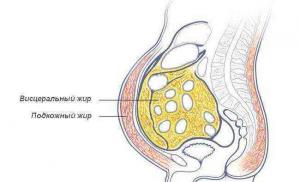Who is the owl man. Owl is a bird from the owl family: description, lifestyle, habitat
Since ancient times, there have been many legends around this little bird. Our ancestors believed that whoever sees her will experience difficulties in life. Say, like a black cat that crossed the road, this feathered one is capable of causing trouble. But in fact, the owl is just a small owl with a very unusual appearance. If you do not understand in detail, then many people will not find any differences between an owl and an ordinary owl.
general characteristics
The owl is a small bird. The length of her body does not exceed thirty centimeters, and the weight does not reach 200 g. If we compare the owl with an ordinary owl, it will resemble the latter's chick, because the length of the owl's body reaches 67-70 cm, and the weight - up to 700 g. signs, you can see that the owl's head has a more rounded shape, and in the owl it is flattened. On his head, you will not find feathers that resemble ears in shape. The rest of the owl is no different from an owl.
Also, this bird is characterized by the external features of a gloomy person, since the feathers above the eyes more resemble eyebrows. Farsighted owls, they can spot prey at a great distance, but not see what is happening a few centimeters away. This bird has a short tail, which helps it create the effect of a large wingspan.
The size of the owl does not prevent him from being a skilled hunter. Depending on the species, they feed on different prey, but mainly rodents and some species of beetles are included in their diet. These birds are very selective and can catch prey according to their own preferences. Sometimes they hunt in pairs, usually in this way the owls catch larger prey, such as rats.
The habitat of the described birds is very extensive; they can be found in any corner of the planet, except for Antarctica. According to external data, owls of different species are very similar, but there are also interesting features.
Uplifted owl
The Upland Owl is a small owl with a rounded head. In size, this species is slightly larger than a pigeon. The color of the bird is brown, with white spots all over the body. The head is large, with asymmetrical facial discs.
The Upland Owl has a rather small eye size and a weak beak. His legs are covered with thick plumage, which led to the name "Upland". The bird's beak is yellow.
Upland owls nest for almost a month. Clutch of more than six eggs. Shaggy owls nest mainly in hollows. Their main diet is vole mice and beetles.
The owl is a nocturnal bird, but in some areas it can also lead a diurnal lifestyle. Upland owls prefer to live in coniferous forests. Such birds live in Russia, Northern Mongolia, Western China and the northern regions of the United States.
Brown owl
The little owl is a brown-colored bird with small white spots. It has a small head and a short tail. The size of this bird is slightly larger than that of the Upland. He prefers to settle in open areas, in the mountains or on the plain. How the owl cries, you can find out if you are near its nest. Singing is more like a whistle.

Owls are very consistent birds when it comes to choosing a mate. Regardless of the breeding season, they always stick together. They try to create nests in burrows, sometimes they dig them themselves. And sometimes they find refuge in old abandoned buildings.
Owl clutches more than 7 eggs. Birds usually hunt during the day. The main diet consists of small birds and rodents. The described species lives in North Africa, in Asia, as well as in Central and Southern Europe.
Sichik-elf
It is a tiny cinnamon owl with gray and white lines. Her eyes are large, yellow, and the beak is gray. Legs without feathering, but covered with bristles. These amazing birds fly like bats, only in a more coordinated way. They are not aggressive. Never go into battle. They prefer to create nests in hollows. In clutch of this bird there are no more than five eggs.

The little elf is absolutely unable to hunt because of its weak beak and loose paws. Their diet consists of different insects. Birds live in the USA and Mexico, where they settle in the trunks of saguaro cacti.
Passerine owl
The Sparrow Owl is the northernmost representative of the owl. It has a brownish-white color and a yellow beak. The legs are densely feathered, down to the nails, which are dark in color.
Sparrow owls are excellent hunters; they have a strong beak and tenacious legs. This bird prefers to settle in the hollows of coniferous trees. Clutch of eggs is usually no more than five eggs.

The named bird hunts regardless of the time of day. And the main diet is rodents and small birds. These are very thrifty birds - before the onset of winter, the passerine owl collects its prey in the hollow and carefully stores it until the cold weather arrives. Passerine owls live in Russia, Europe and North Asia.
Rabbit owl
These owls are the most unique of all of the above. They lead a very active daytime lifestyle. They have a bright sandy color with small white dots. The rabbit owl is a land hunter with long legs and a neck that they like to stretch out. These birds live in colonies and all together are ready to attack the enemy who encroached on their nest.
The chicks of this species of owls are capable of making very interesting sounds. When danger comes, they begin to crackle, imitating a rattlesnake.
These birds are very fond of settling in burrows dug by some mammals. Rabbit owls actively protect their clutches, the female tries to position herself as far as possible from the entrance to the burrow, and the male makes distracting maneuvers, trying to confuse the predators. Usually in a clutch of rabbit owls there are up to five eggs. The most interesting thing is that while the female is incubating the eggs, the male lives in another burrow. The habitat of these birds is America.

What is the difference between an owl and an owl
In the article, we have already listed the characteristics that the owl possesses. The eagle owl, like the owl, belongs to the owl family. It is very easy to distinguish between these two birds:
- The owl is diurnal. This is the main distinctive feature of the bird, since the dark time of the day is considered the main and constant period of wakefulness of the owl.
- The owl is much larger than the owl. Its length reaches 80 cm, and its weight can be 4 kg. It's hard to miss, while the owl can hide easily.
- The diet of owls is much more extensive than that of the owl. Due to its strong paws and powerful beak, the owl can attack large mammals.
- The owl has large feathery ears, which are not characteristic of many species of owls.
- The eyes of an owl can have a red iris, which is absolutely not characteristic of yellow-eyed owls.
The owl is a small owl. However, it has its own characteristics, which are very interesting. We invite you to get to know this representative of the animal world better.
Owl appearance
Owl is a common name that includes several genera. These include various species of small owls that live in forests. The owl is a bird with an unusual appearance. She has a large head, as well as large round eyes with special protrusions located above them, which resemble black raised eyebrows. In addition, in her, like in the barn owl, the facial corolla is noticeably pronounced. It looks like a mask on a bird like an owl. This gives it, in combination with the "eyebrows", a serious look. Seriously, she has a name.
The name "owl"
We hope you know how to spell "owl"? Of course, no soft sign. However, not everyone knows where this name came from. In modern speech, it is customary to compare a lonely and gloomy person with an owl. But this word originally comes from similar words that mean "whistle". Most often, owls make exactly the whistling sounds, breaking the stereotype about the "hooting" of owls. This bird in Kyrgyzstan is called "baikush", which means "beggar" or "poor" in translation, precisely because of its sad cry. However, in other habits, the owl is still close to the representatives of owls. Just like them, he is a night hunter.
Is it easy to meet an owl?
The owl feeds on various rodents, sometimes eating small birds. It can be distinguished from owls by its absence of feathers that resemble ears. It is not so easy for a person to notice this bird in the forest. The fact is that the owl very rarely catches the eye. In addition, this bird is "masked" in the crown of trees by a variegated color. Most often, you can find an owl in the taiga. However, some species, in particular the domestic owl (brownie), settle next to people, sometimes in residential buildings. All species are similar in appearance.
Genera and species of owls

Among the species of the genus Athene, sometimes called the genus of Sirins, the following can be noted: house owl (pictured above), spotted or Brahmin, forest, rabbit, Indian. The latter is an extremely rare species. It has even been listed as an extinct bird by the IUCN. Nevertheless, some bird watchers believe that it still exists, although it is very rare.
Types of Upland Owls: Common, South American Upland, Mexican Upland, Nova Scotia Upland. The more common name for the latter is American. Sometimes ornithologists refer to one of this species as Mexican and South American.
26 species belong to the genus of passerine owls: red passerine, collar, cape, cuckoo, gnome owl, tiny, nominative, pearl, jungle, Cuban, chestnut-backed, red-breasted, etc. They are distinguished by their small size, as well as a long tail, short wings and eye-like contrasting pattern on the back of the head, thanks to which they were called "four-eyed".

There is also a genus of elf owls. It includes a single species called Micrathene whitneyi (pictured above). These birds began to be called elves because of their very small size - only 12-14 cm.
Spreading
Athene is the most common genus of owls. Its representatives inhabit Europe, Africa, Asia, America. The little owl is found, for example, in the south and center of the European continent. In addition, it can be found in the northern regions of Africa, as well as throughout Asia, with the exception of the north. The habitat of owls in Russia covers the south and center of the European part, Southern Altai, Central Asia, Transbaikalia, as well as the nearest republics - Tuva, Kazakhstan. In South and North America, there is another species of this genus - the rabbit owl.
Uplifted owls have spread across Eurasia. They are also found in Canada. The remaining 3 species live in different parts of the American continent (their names testify to this). In South and Central America, passerine owls are especially common. They are found everywhere except Australia. And elf owls live in the United States, in the southwest, and in Mexico, where they sometimes inhabit the hollows of huge.They are not able to hollow out nests on their own due to a weak beak, which is why they settle in hollows or other people's nests. Common owls Athene settle in warm climates mainly in open steppe areas, as well as semi-desert and desert. They can also live in the north next to humans or inhabit taiga forests. Coniferous forests, located both on the plains and in the mountains, are chosen by the uplifted owls.
Lifestyle

Lead by representatives of all genera. Only those living in the highlands, Athene individuals sometimes descend into the plains. These owls arrange their nests in various shelters, as which they can sometimes use heaps of brushwood, burrows of other animals, roofs of buildings, walls of wells and even attics of houses. They are predominantly, however, forced to hunt in the north and on polar days. Upland owls are especially nocturnal and forest owls. They live in hollows. Sparrow owl nests mainly in mixed forests, and elves occupy free hollows. Only the behavior of elf owls from all genera differs from the rest of the representatives. They only hunt insects in the evenings, mornings and nights. These birds sometimes attack victims on the ground. They eat their prey in the nest.
Brownie owl hunting and feeding

The hunting style of such a bird as the house owl is extremely varied. She has strong flexor muscles on her fingers, so she easily grabs fairly large rodents. The brown owl hunts in the early morning, as well as from evening to midnight. He can watch the victim for a long time, after which, when she stops, attack her. Another way is to overtake your prey on the fly or in and sometimes walking on the ground. You, of course, are interested to know what the brownie owl eats. Its food is mainly rodents - voles, hamsters, house and bats, jerboas. However, sometimes representatives of this species collect earthworms or eat insects, for example, dung beetles or ground beetles.

Sometimes they store food for future use. However, the true bunny about food is the passerine owl. Let's see what it eats.
What does a passerine owl eat?
Birds and small rodents become its prey. This owl hides food reserves in the autumn in a hollow, but it differs in the process of eating it. He never swallows his prey whole, but chooses the most tidbits. The passerine owl carefully plucks the caught victims.
Hunting for Upland Owls
Upland owls ambush at low altitudes and hunt here. They also fly over hunting grounds, examining them carefully. These owls feed on murine rodents and sometimes small birds. For example, they can catch ducklings near bodies of water. These birds swallow their food whole. They often regurgitate undigested remains, so the daytime "camp" of Upland Owls can be found on them.
Elf owl food
The elf owls appear. They catch their prey both on the ground and on the fly. Locusts, grasshoppers, fly larvae, moths, centipedes, caterpillars, cicadas, spiders and even scorpions become victims of elf owls. Therefore, all owls bring benefits to a person in one way or another.
Reproduction

With the onset of spring, the breeding season for owls begins. Males at this time emit mating calls. The female lays eggs in early April. It usually contains 4 to 5 eggs with grainy white shells. Owl eggs incubate for 28 days. During incubation, the male feeds the female (this applies to the little owl). The chicks that are born are blind and very fluffy. However, after a month they practically reach the size of the body of an adult. Chicks become independent in August. As for Uplands, their breeding process also takes place in April. These owls have a similar number of eggs in a clutch, but the shell is almost white. Other features of their reproduction are similar in general to the genus of owls. The mating behavior of passerines is somewhat different. In these owls, the male begins to feed the female even before oviposition. After the chicks are born, the owl "removes" its nest. She throws out all the accumulated garbage from there. In a month, the chicks of this bird leave the nest. They rarely come back. During this period, the parents feed them near the nest - where the chicks find themselves with a whistle-like cry. The male of elf owls replaces the female during incubation when she goes hunting at night. The percentage of reproduction in these birds is the highest, since their nests are located in places that are inaccessible for predators.
Sychi village
Villages are often named after these interesting birds. One of them is especially famous. In the Perm region, in the Okhansk region, the village of Sychi is located. The healer Alexander Ivanovich, who lives here, is very popular. People even come to him from abroad. This 82-year old man is said to cure various diseases. By the way, he accepts only baptized people, and also conducts divine services in his own small church.
And then there is a militia (call sign - "Sych"), who regularly reports on the events in the DPR. As you can see, the name of this bird is quite popular.
The owl is a small bird of the owl family, which has an extraordinary appearance. Due to the presence of specific protrusions, the so-called eyebrows, the bird has a serious look. There are huge eyes on the round head. The bird has a small body and a short tail. The wings and legs of little owls are different for each type.
But despite the cute appearance, they are popularly notorious... It is believed that with their whistle, they portend death. What is an owl in colloquial speech? Quite often, this concept is used to define an introverted and gloomy person.
Owl is a bird with a serious appearance and a plaintive cry
On the territory of our country, this bird is found quite often. Like their relatives, owls, they are predominantly nocturnal and, thanks to their color, perfectly camouflage themselves in the tops of trees. But, unlike owls, they feel comfortable not only late at night, but also in the early evening. In the place where they live, after sunset you can hear a plaintive whistle.
On average, the size of a representative of the owl family reaches up to 30 centimeters, and the body weight does not exceed 100-200 grams.
The bird is divided into several main types:

Each species, in turn, is divided into subspecies, which differ in size, habitat, and also have some differences in external data. The most common type of little owls in our country is the little owl.
Owl habitat
These small birds inhabit almost all continents of the earth and their appearance is the same for all habitats. They are characterized by a sedentary lifestyle..
Birds settle in the steppe zone, deserts, they can take a fancy to dense forests. Some species, for example, the house owl, can live next to humans, make nests in abandoned buildings and even under the roofs of houses.
Most often, these birds capture other people's nests, hollows and even burrows.
In Italy and Austria there were often cases when people managed to tame owls. They cut off their wings and let them into the garden to exterminate rodents and small insects. Even small owls were used during hunting as a kind of bait. In our country, it is considered who will tame the owl - will impose a dashing lot on himself.
Owls are professional hunters
Owls are very good hunters. They can hunt down their prey for a long time and, as soon as it stops, grab it in a matter of seconds.
The diet of little owls is not very diverse:
- Small mammals.
- Insects.
- Small birds.
 Such a representative of the genus as owl - elf, is exceptionally insectivorous and is able to eat even spiders and scorpions.
Such a representative of the genus as owl - elf, is exceptionally insectivorous and is able to eat even spiders and scorpions.
Passerine owl can also hunt small birds. When the prey is caught, the passerine owl carefully nibbles it, eating the most delicious pieces.
An interesting fact is that some species of these small owls store food for future use, storing it in the place of residence.
Thanks to this peculiar diet, owls are one of the main defenders of gardens and vegetable gardens.
Reproduction of owls
Owls are monogamous birds... Couples create with one, very rarely two females and live like this all their lives. At the age of one year, the birds are ready to mate. This usually happens with the onset of spring. In April, the female lays up to 5 eggs. During the incubation period, most males hunt for food for the female.
Owl representatives - elves replace the female, sitting on the eggs themselves, giving her the opportunity to hunt on her own. A month later, small chicks appear. At first they are covered in fluff and blind. But they grow fast enough. By a month or two, they can reach the size of their parents and independently obtain food for themselves.
The average life span of a bird is 15 years.
Bird owl- this is a night feathered. All animals and birds that prefer to lead a nocturnal lifestyle have long been attributed by people to dark, mystical and unkind actions.
Signs associated with the owl bird also not very happy and bright. Why this happens is still a mystery. Probably, the reason for everything is still the feathered nightlife.
After all, everything that happens and happens in the clear sun is significantly different from the night. The night contains many mysteries associated more with the dark side.
If owls have long been accustomed to these sounds, then the appearance of a feathered in the daytime simply horrified people. The Romans set themselves the goal of catching and destroying the bird lost in time because it allegedly brought trouble to them.
The Scots and other peoples of European countries still adhere to the same opinion. The bird that sat on the cross promised change for the parishioners. They either had a change of priest, or there was a fire.

Oddly enough, many events were interconnected. It is still unknown whether this is a wild coincidence or whether the owl really has some kind of mystical gift.
Features and habitat
This interesting bird belongs to owls. It is small in size. It weighs no more than 180 g, and grows no more than 28 cm in length.The wingspan reach about 59 cm.
There are practically no differences between females and males, the only one is usually larger than the second. They have dense plumage, a fairly wide head. They don't have feather ears. The small yellow beak does not stand out too much.

The eyes are decorated with a yellow iris, they are fixed in the socket. In order to see something from the side, the owl needs to turn its head. have the ability to look over the shoulder. They have well-developed long-distance vision. They can't see anything too close.
The plumage of owls is brown with white spaces. There are more white shades on the abdomen. The claws of the bird are black-brown. Bird owl looks can be said somewhat frightening.
This is not only because mystical and dark properties have been attributed to it. Its entire appearance is not very pleasant. The owl is gloomy and with a prickly piercing look.

Sparrow owl
You can find these in many places. They live in the center and in the south of Europe, in the north of Africa, in Asia. Owls prefer open areas. They are comfortable in the mountains and on the plain. They are not afraid of arid desert places.
Character and lifestyle
Owl - nocturnal bird leads a sedentary lifestyle. Among them there are some species that can periodically change their habitat, but there are very few of them in nature.
The bird can fly quietly and maneuver, which helps her in hunting. Victims sometimes do not notice how these birds fly up to them. Owls have excellent eyesight and hearing.

Although they cannot turn their eyeballs to see what is happening from the side, a rather flexible neck that can rotate 270 degrees helps them a lot.
Owls show their activity very early in the morning or late at night. They are quite careful and never let people near them. At dangerous moments, the owls begin to bow and sway in an interesting way.
The frightened bird instantly flies off and begins to soar low above the ground. For hunting, owls choose the night time and only sometimes can afford to hunt during the day. They rest in hollows or among rocks.
Sparrow owl somewhat different from their relatives. He doesn't even fly like them. All this happens with him with amazing speed and impetuosity. The bird is assisted by wide wings and a long tail.

The owl manages to easily fly between the branches without clinging to them even in dense forest stands. In pursuit of its potential victim, the bird does not slow down its accelerated flight even when cornering. After reaching the goal and catching medium-sized rodents or birds, the owl returns with them in its claws.
All owls are prudent. They prepare food for themselves for future use. They begin to do this in the fall and in terms of food before the onset of cold weather they are always ready.
The same pair of these birds can have one nest for a long time. They build nests for themselves in conifers, if their habitat is a forest.
Sometimes they can take an abandoned nest of woodpeckers without any hesitation. Owls can also settle in the attic of a residential building, in a hole, in a well, or just among brushwood. Upland Owl, for example, it builds its hollow in a large cactus.

Many people know as the owl bird cries. But not everyone manages to see him due to the hidden lifestyle of the feathered and his excellent ability to disguise.
Nutrition
In order to get their own food, owls have to hunt. At the same time, they act in a pair and harmoniously. The owls can easily defeat the gray rats, which are famous for their incredibly vicious nature.
An important feature of these birds is that they hunt underground. Therefore, it is very difficult for gerbils to escape from them.

Underground hunting sometimes negatively affects the condition of bird feathers. They can be combed around the head and back. Sometimes, instead of them, the owls simply have needles sticking out.
The bird menu is very diverse. Its changes occur due to the taste of birds and the presence of one or another prey. For some owls, the most favorite food is dung beetles. Others get incredible pleasure by devouring mice, and the third is more to the taste of phalanx spiders.
Reproduction and life expectancy
The question of finding a pair for house owls becomes relevant even in winter. Until May, the month, the males sing songs, trying to attract the attention of the females that have attracted them.
The whistle, alternating with an interesting trill, eventually becomes noticed by the female and they form a pair. After that, the couple amicably engaged in the improvement of their family nest. As soon as the nest becomes residential, the female immediately lays 2-3 white eggs. It usually takes her several days to do this.

The female has to incubate the laid eggs for about a month. All this time she tirelessly only does this and only once a day can leave her future offspring.
During incubation, the male owl assumes responsibility and carefully takes care of the female, brings her food. After the appearance of the babies, the female feeds them with what the head of the family found.
The development and growth of the offspring is quite intensive and already at the age of 12 months the chicks are ready for an independent life, the duration of which is about 15 years.
There are many owl associated with bird... Most of them are not the most favorable. Our ancestors believed that this bird warns of impending danger. If you see her, a real trouble is possible, both in the material plane (for example, to fall or injure yourself), and in the intangible (someone is doing you harm).
Owl features and habitat
Owl bird - a small owl with an unusual appearance. Many people do not even know how they differ from ordinary people. The size of the owl is small. Its body length reaches only 30 cm, and its weight is about 200 g.
Common owls are much larger: length - up to 65 cm and weight - up to 700 g. The owl's head is round. In owls, it is flattened. The plumage of owls is brown, with white, small spots.
In owls on feathers, longitudinal and transverse lines are easily distinguishable. In addition, owls do not have feathers that resemble ears. Otherwise, they are no different from their relatives from the family.

On the large head of the owl there are huge eyes; they are fixed in the eye sockets. Therefore, in order for the bird to look in any direction, it is necessary to turn its head.
There is an opinion that owls can turn it back. This is a mistake, the head of the bird turns in any direction 135 degrees, which makes it possible to look over the shoulder of the bird.
Farsightedness is developed in owls. At a distance of several centimeters, they cannot see anything. However, at a great distance and in the dark, the vision is excellent. To distinguish prey, they are helped by filamentous feathers located on the paws and beak, they act as a "sensor".
Bird owl looks very seriously. This accentuates the corolla and eyebrow-like protrusions above the eyes. Due to its appearance, the feathered one is comparable to a person who is characterized by sullenness. ... Owl bird makes whistling sounds, unusual for an owl and its name displays the word "whistle".

A dense body, short in length, ends in a shortened tail, which increases the visual size of the wings. The owl's legs are covered with feathers, the length of which varies from species to species.
The range of owls is quite extensive. They can be found on almost all continents, with the exception of Antarctica. In appearance, owls from different places are hardly distinguishable.
The nature and lifestyle of the owl
Owls are sedentary birds. An exception is the genus Athene, which lives in the highlands and can descend into flat terrain. The choice of home for representatives of these birds is quite different.
For example, the most common Athene owls, in warm areas, prefer open spaces such as steppes and semi-deserts. Northern species prefer forests or settle near human dwellings. Their homes are quite varied. Nests can be found in burrows, wells, brushwood heaps, and building attics.

In the photo, an owl is an elf in the hollow of a huge cactus
The elf owl lives in the southwest of the North American continent. With a weak beak, they are not able to hollow out a nest themselves, therefore they settle in the nests of other birds or tree hollows. One of these places is the hollow of a huge saguaro cactus. Upland Owl lives in the coniferous forests of the foothills.
Sparrow owl, mainly lives in the hollows of trees, which are in the mixed forest. The owl is a nocturnal bird. However, there are exceptions. For example, a passerine owl is active in the morning and at sunset, while an elf owl chooses a night life. For northern inhabitants, a long, polar day becomes the hunting time.
How the owl bird cries, many people know, but it is not easy to notice it. This is facilitated by the secrecy and camouflage color that hides the owl against the background of trees. It is interesting that listening to the owl bird crying at night foreshadows rainy weather.
Owl feeding
The zygodactyl structure of the paws helps the owls to hunt and easily grab their prey. That is, two fingers of the bird are directed forward, and two - backward. When roosting, the bird can turn one finger towards the front.
Owls have no teeth, so they do not chew on their prey. They tear it into small pieces or swallow it whole. Parts that cannot be recycled, such as feathers, bone, or wool, are later belched.
The hunting style and diet of different species of owls is significantly different. The house owl food is: voles, hamsters, and even flying ones. He does not disdain insects and earthworms.

The owl patiently guards the victim and attacks when it stops moving. Both heaven and earth are suitable for hunting. House owls stocks are constantly being made.
The sparrow owl prefers small birds and rodents. The victim is not swallowed whole. The prey is scrupulously plucked, the best pieces are selected from it. In the fall, food is hidden in the hollow.
The Upland Owl flies above the ground, looking for prey. A small height is chosen for an ambush. The object of the hunt is birds and rodents. The food is swallowed whole.
The elf owl is insectivorous. Its diet: grasshoppers and locusts, fly larvae, millipedes, caterpillars and cicadas. Scorpions often become prey. The feast takes place exclusively at home.

Sparrow owl
Reproduction and life expectancy of an owl
In the spring, the mating season begins in owls. At this time, the male owl birds call the females with their voice. In mid-spring, the female lays about five eggs with a white, granular shell.
While she incubates eggs, her feeding falls to the share of the male. A male passerine owl begins to feed the expectant mother even before she begins to lay eggs. And the future father of elf owls gives the opportunity to the female independently and replacing her in the clutch.
Chicks appear in a month. They are blind and covered in fluff. Immediately after birth, the female sparrow owl cleans the house and frees it from garbage. Children grow quickly and reach the size of their parents in a month. They become completely independent by August.

The survival rate in owls is very high, because their home is practically inaccessible to predators. The average lifespan of owls is 15 years.
The mystery of owls causes a certain fear in people. Many beliefs and signs are associated with these birds. But if you get to know them better, it is impossible not to notice their intelligence and attractiveness.













